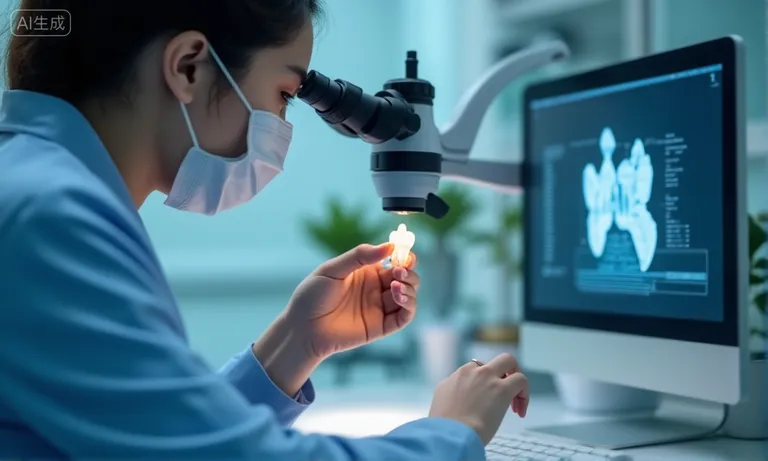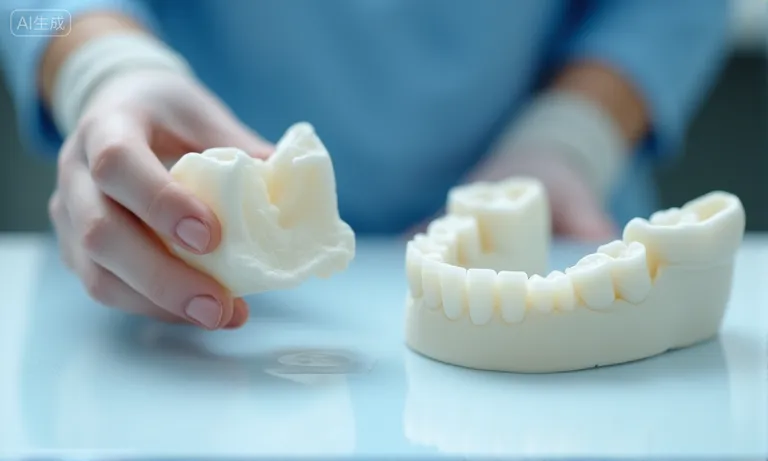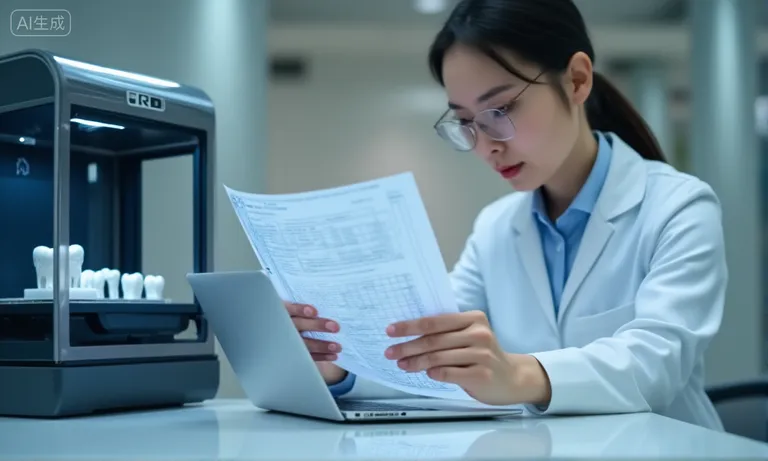3D printing is reshaping implant dentistry by enabling faster production, higher accuracy, and greater design flexibility. For procurement teams and dental professionals, digital manufacturing offers a clear path toward shorter turnaround times, consistent quality, and scalable customization that supports both clinical and operational goals.
The core benefits are clear: in-house 3D printing reduces delivery from weeks to days or hours, while digital precision ensures a closer fit, fewer remakes, and more reliable case outcomes. Customization through patient-specific implants, surgical guides, and anatomical models enhances esthetics and long-term function, giving clinics a tangible advantage in treatment planning.
Beyond technology, procurement value lies in collaboration and ROI. CAD/CAM integration and real-time digital workflows improve lab communication, reduce errors, and minimize waste. Faster delivery cycles and lower labor costs drive cost-effectiveness, while supplier evaluation should focus on turnaround metrics, remake rates, and quality assurance standards. By weighing these factors, decision-makers can strengthen lab partnerships, reduce operational risk, and secure long-term value.
How Does 3D Printing Speed Up Delivery in Dental Implant Labs?
3D printing reshapes dental implant production by eliminating time-consuming steps and enabling in-house fabrication. What used to take weeks in traditional workflows can now be completed in a matter of days—or even hours—when digital files flow directly from design to production. For clinics and procurement teams, faster turnaround directly translates into shorter chairside waiting times, better scheduling, and more predictable delivery.

Dental-lab-3D-printing-speed-turnaround
What steps in the traditional workflow are eliminated with 3D printing?
Traditional implant workflows often require multiple manual processes—wax-ups, casting, and repeated adjustments—all of which add days or weeks. 3D printing eliminates several of these steps by converting digital scans into directly printable models, surgical guides, or provisional restorations. The result is a more linear process where fewer handoffs mean less waiting and fewer chances for error.
How does in-house printing shorten delivery from weeks to just days or hours?
- In-house 3D printing allows clinics and labs to bypass shipping delays and external outsourcing queues.
- A surgical guide that previously took 2–3 weeks through conventional methods can often be produced within 24–48 hours.
- Same-day printing of temporary crowns or models supports immediate patient treatment planning.
- This speed not only benefits patients but also reduces procurement pressure by aligning delivery with urgent case demands.
Why does rapid prototyping improve scheduling and case flow?
Rapid prototyping means that design iterations can be tested almost instantly. If a framework or guide requires adjustments, reprinting can be done within hours rather than waiting for an entirely new fabrication cycle. This flexibility improves clinical scheduling and ensures that procurement teams have better control over batch orders, reducing bottlenecks across multiple cases.
From our perspective as an overseas dental lab, we have seen that clients adopting hybrid models—combining in-house 3D printing for immediate needs with outsourced production for complex restorations—achieve the most efficient balance. By integrating fast turnaround with reliable large-scale fabrication, clinics can deliver speed without sacrificing quality.
How Does 3D Printing Improve Accuracy, Quality, and Success Rates?
3D printing improves dental implant outcomes by enhancing precision, reducing remake rates, and supporting higher long-term success. Unlike traditional methods that rely on multiple manual steps, digital fabrication ensures consistent fit and durability while lowering the risk of complications. For clinics and procurement teams, this means fewer remakes, more predictable outcomes, and stronger ROI.

Dental-lab-3D-printing-accuracy-QA
How does digital precision improve implant fit and reduce complications?
Digital scans feed directly into CAD/CAM systems, allowing for precise control over margins, angulation, and occlusion. This accuracy reduces the risk of misfit, which in turn lowers the chances of post-placement complications. A closer fit not only supports long-term implant stability but also minimizes adjustments chairside, saving time for both clinicians and procurement teams.
What role does material selection play in minimizing remakes and ensuring durability?
- Resin models: Provide rapid prototyping but are mainly for temporary guides and planning.
- Biocompatible resins: Used for surgical guides, ensuring safety and patient comfort.
- High-strength ceramics and hybrid polymers: Deliver long-term durability in final restorations.
- Procurement impact: Choosing the right material early helps reduce remake rates, ensuring both cost-effectiveness and predictable case flow.
How do labs maintain quality assurance in 3D-printed restorations?
- Digital file validation: Reviewing scans and CAD designs for margin accuracy before printing.
- Printer calibration: Ensuring machines are routinely checked for dimensional accuracy.
- Material verification: Using certified, traceable resins and ceramics to meet compliance standards.
- Post-processing checks: Inspecting surface finish, fit, and strength before final shipment.
Our experience as an overseas dental lab shows that the combination of digital precision and robust QA reduces remake rates significantly. For example, clinics working with us on 3D-printed surgical guides report fewer adjustments and faster chairside placement, which directly strengthens their success rates and patient satisfaction.
How Does 3D Printing Enable Greater Customization for Dental Implants?
3D printing enables patient-specific solutions that traditional methods cannot match, from anatomical jaw models to customized surgical guides. This level of personalization improves both esthetics and long-term functionality, giving clinics and procurement teams confidence that restorations will align with patient needs while scaling production efficiently.

Dental-lab-3D-printing-customization-models
How does 3D printing support patient-specific designs and anatomical models?
Digital scans can be translated into accurate 3D-printed models of a patient’s jaw, bone structure, or tooth morphology. These models allow clinicians to simulate implant placement before surgery, reducing risk and improving predictability. For procurement teams, this capability supports precision planning while minimizing delays from remakes or adjustments.
Why does customization matter for implant aesthetics and long-term function?
- Esthetics: Personalized designs match gingival contours and natural translucency, avoiding the “generic” look that patients often reject.
- Function: Customized abutments and guides improve occlusion and bite alignment, supporting implant longevity.
- Procurement benefit: Customization reduces remake exposure by aligning first-time fit with patient expectations, saving both time and budget.
What examples show scalable production of personalized surgical guides?
- Design import: Digital scans uploaded directly into CAD software.
- Automated guide creation: 3D printers fabricate patient-specific guides with minimal manual intervention.
- Batch scaling: Labs can run multiple patient cases in one print cycle, allowing bulk customization without extending delivery time.
- Clinical validation: Printed guides are verified for accuracy before shipment, ensuring they integrate seamlessly into surgical workflows.
As an overseas dental lab, Raytops Dental Lab has supported clinics that moved from generic stock abutments to patient-specific designs. They reported not only higher patient satisfaction with esthetics but also fewer long-term complications. This shows how customization, when scaled with the right lab partner, becomes a procurement advantage rather than a cost burden.
How Does 3D Printing Strengthen Digital Workflows and Collaboration?
3D printing integrates seamlessly with digital workflows, enhancing both lab-dentist communication and production efficiency. By ensuring CAD/CAM compatibility, real-time design sharing, and error reduction, digital workflows transform 3D printing from a standalone tool into a collaboration driver. For procurement teams, this integration means less waste, fewer remakes, and smoother supplier partnerships.

Dental-lab-digital-collaboration-3D-printing
Why is CAD/CAM compatibility critical for 3D-printed cases?
CAD/CAM systems define the accuracy of the final restoration. Without compatibility, file conversions can distort margins, angulation, or occlusion. 3D printing thrives when input files remain intact, enabling precise surgical guides, anatomical models, and restorations. Procurement managers often evaluate suppliers by checking whether labs can handle cross-platform CAD/CAM files without losing accuracy.
How does real-time design sharing improve lab-dentist communication?
- Faster approvals: Digital files can be reviewed and approved instantly across time zones.
- Transparent changes: Any design modification is visible to both lab and clinic in real time.
- Error reduction: Misinterpretations common in manual impressions are avoided.
- Collaboration impact: Shared files help procurement teams align multiple clinics under a unified workflow.
What role does digital workflow play in reducing waste and errors?
- Scan import: Digital impressions minimize inaccuracies at the source.
- Design validation: CAD models are checked before 3D printing starts.
- Simulation runs: Potential issues can be identified virtually without wasting material.
- Automated checks: Printer software verifies orientation and support structures, further reducing errors.
From our role as an overseas dental lab, we have seen that digital integration allows clinics to scale faster and collaborate more efficiently. By leveraging CAD/CAM compatibility and real-time file sharing, Raytops Dental Lab helps clients cut waste, shorten approval cycles, and achieve predictable outcomes across multi-clinic networks.
What Are the Cost and ROI Factors Procurement Teams Should Weigh with 3D Printing?
3D printing impacts procurement not only through technical improvements but also by reshaping cost structures and ROI. By reducing labor dependency, optimizing material use, and enabling faster case completion, it creates measurable value. For procurement teams, evaluating ROI means balancing upfront investment with long-term savings from fewer remakes, quicker delivery, and more consistent supplier performance.

Dental-lab-3D-printing-cost-ROI
How do reduced labor and material efficiency lower overall costs?
- Less manual work: 3D printing replaces steps like waxing, casting, and multiple adjustments, lowering labor costs.
- Material efficiency: Automated layering minimizes waste compared to traditional milling or casting.
- Batch production: Running multiple cases in a single cycle reduces per-unit costs.
- Procurement value: Lower waste and reduced labor free up budgets for scaling and innovation.
Why does faster turnaround directly improve ROI for procurement teams?
The financial impact of speed is often underestimated. Faster turnaround means patients can be scheduled sooner, reducing chairside downtime and maximizing clinic throughput. For procurement managers, quicker delivery lowers the cost of delays, shortens billing cycles, and improves supplier reliability metrics. This makes ROI less about initial price and more about time-to-value in daily operations.
Which metrics help procurement evaluate suppliers with 3D-printing capabilities?
| Evaluation Metric | Why It Matters | Procurement Benchmark |
|---|---|---|
| Turnaround time | Directly affects scheduling and patient flow | From weeks → days/hours |
| Remake rate | High remake rates add hidden costs | <5% target for consistency |
| Material traceability | Ensures compliance and safety | Certified resins/ceramics |
| Scalability | Ability to handle bulk orders | Multi-case batch printing |
| Cost transparency | Avoids unexpected surcharges | Clear pricing for materials & labor |
Our perspective as an overseas dental lab shows that ROI is best realized when procurement teams track both direct costs and supplier performance indicators. At Raytops Dental Lab, we have seen clinics achieve measurable savings by combining faster turnaround with low remake rates—demonstrating that supplier evaluation is as critical as the technology itself.
Conclusion
3D printing is transforming dental implant labs by delivering faster turnaround times, higher accuracy, and scalable customization. Digital workflows and real-time collaboration reduce waste and remakes, while procurement teams gain measurable ROI through shorter delivery cycles and more predictable supplier performance. The value extends beyond technology—it lies in how consistently these outcomes can be delivered across cases and clinics. Partnering with an overseas dental lab such as Raytops Dental Lab, which combines digital expertise with strict quality assurance, ensures that 3D printing becomes not only a tool for innovation but also a foundation for reliable, long-term procurement success.


